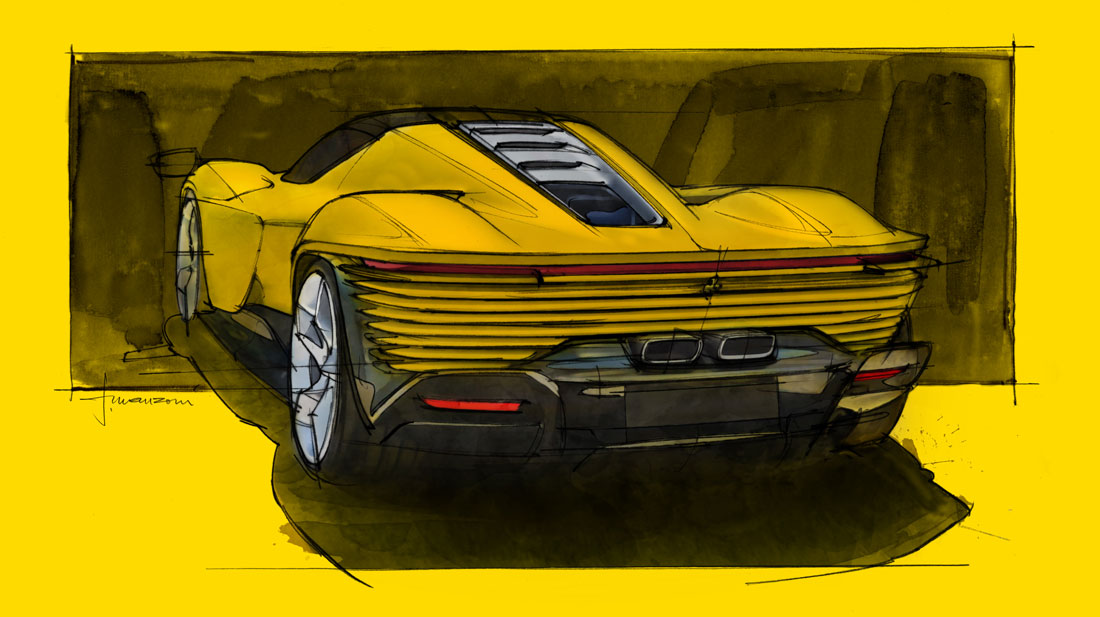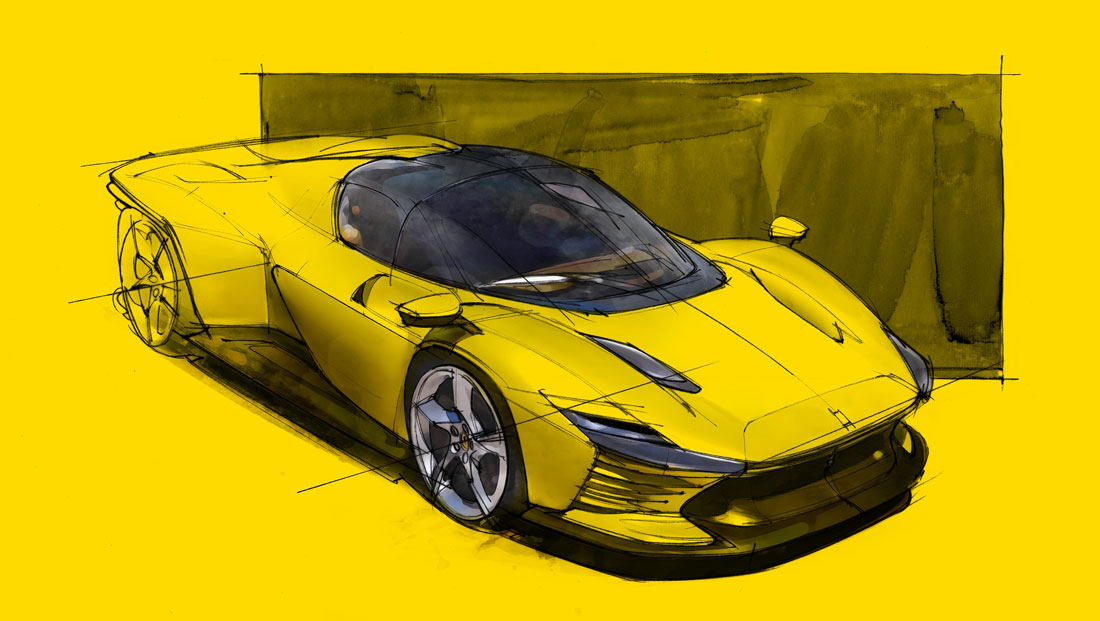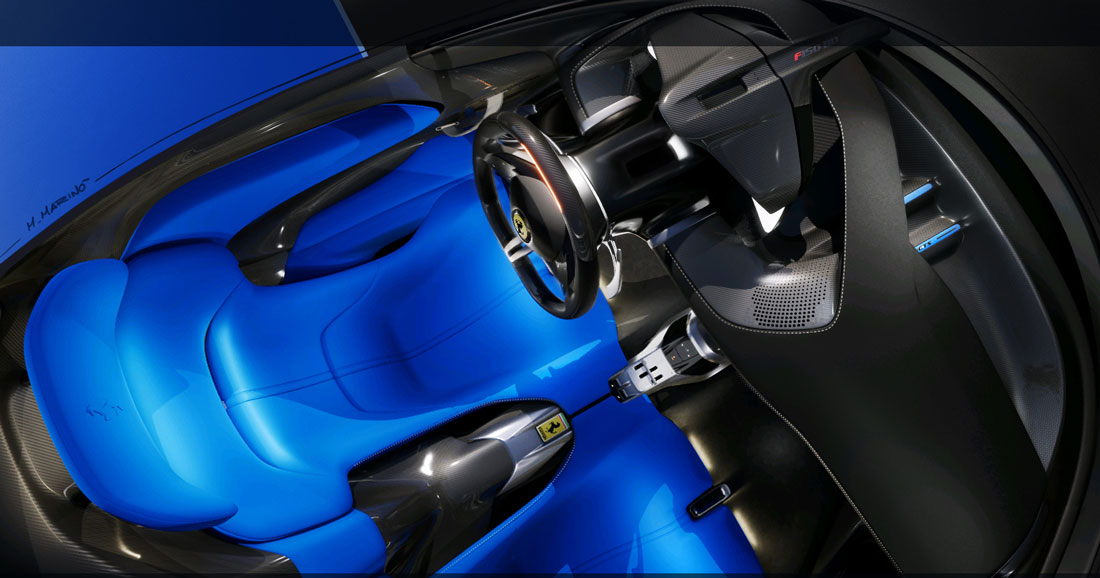“We wanted to create an art object, not just a car, starting from our style codes and projecting them into the future”. This is how Flavio Manzoni, Ferrari Chief Design Officer, presents the Ferrari Daytona SP3, the new collector’s jewel that joins the Ferrari Monza SP1 and SP2 in the “Icon” segment, that the Prancing Horse brand dedicates to special series evocative of its history. A project in which design literally dictates the approach, with a stylistic freedom rarely granted in the case of a supercar.
References from the past
If for the Monza the historical reference were the “barchettas” of the 1950s, for the Daytona SP3 the inspiration came from the legendary victories of the Maranello Sport Prototypes of the following decade, in particular the 330 P3/4, the 330 P4 and the 412 P which in 1967 won first, second and third place at the 24 Hours of Daytona. “They were cars designed expressly for the race track and performance, but with spectacular inherent beauty.
Futuristic object
Very sensual works of art thanks to voluptuous and powerful wings against a compact passenger compartment, almost as if it were an aeronautical cockpit embedded in the car”, Manzoni observes. But he immediately points out: “We never thought about a literal interpretation of those shapes. The Daytona SP3 breaks from the past to become a futuristic object, almost an abstract art sculpture”. The project began in 2018, shortly after the launch of the Monza SP1 and SP2. The architecture stems from a noble base (LaFerrari, but without the hybrid engine), with the V12 aspirated engine in the central rear position with 840 hp, the most powerful so far produced by Ferrari.
Monolitic vehicle body
“We wanted to capture that voluptuous spirit of the Sport Prototypes of the 1960s, starting from excellence in terms of chassis”, explains Palazzani. The de-hybriding of the engine allowed the designers to work on the ideal proportions, revisiting the entire engine layout, in consultation with the engineers, in order to achieve a monolithic and sculptural body with a strong central sidecut. Also the headlights with the semi-eyelid are a modern reinterpretation of the retractable versions, a fascinating element that reveals a double identity which we have long dreamed of reinterpreting”.
Cabin defined by a single line
This approach was also followed for the interiors, a combination of the Sport Prototypes spirit and the modern comfort of a lounge room, explains Massari. “We wondered what the appeal of those cars consisted of, so spartan, minimalist, with the chassis cladding exposed. So we started from formal purity. From the first sketches, we chose those that allowed us to draw the passenger compartment almost with a single line”.
Functional interior
The arch of the windshield seems to bisect the passenger compartment: “In the back, the enveloping area of the seats, a “cloak” that extends to the doors; at the front, the functional part, with the dashboard reduced to a minimum, emptied where possible to give a feeling of width. But always keeping performance in mind; in the track tests we checked with the test drivers even the smallest details, for example the elbow room when cornering”. Palazzani jokes: “The fact that it was a design-driven project shouldn’t fool you; we just suffered a little less”.
It is not by chance that Flavio Manzoni speaks of a holistic approach: “Amalgamate everything to keep the form pure, with the technical functions in second place, for a strong unity of the whole”. The Ferrari legend is kept alive thanks to cars like this. Obviously, very exclusive.
(Full article in A&D no. 252)
















